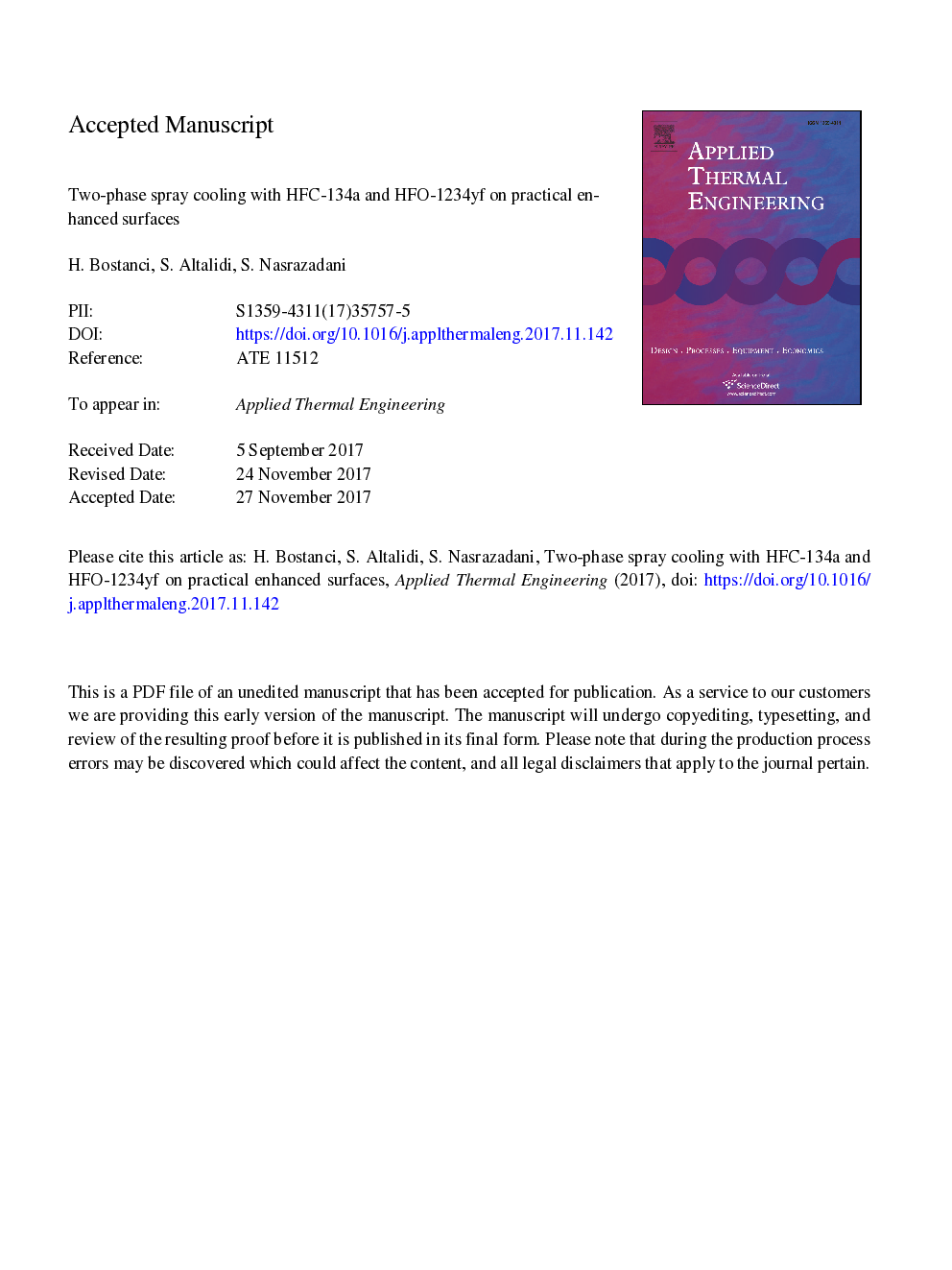| Article ID | Journal | Published Year | Pages | File Type |
|---|---|---|---|---|
| 7046163 | Applied Thermal Engineering | 2018 | 33 Pages |
Abstract
An experimental study was conducted to characterize the spray cooling performance of HFC-134a and HFO-1234yf refrigerants using enhanced surfaces produced by simple processes with implications for active two-phase cooling of automotive power electronics. Experimental setup involved a closed loop spray cooling system featuring a pressure atomized spray nozzle and a 1-cm2 heater sample that simulated a high heat flux device. Heat transfer surfaces consisted of three modified surfaces, namely, electroplated-microporous, sanded, and blasted surfaces, along with a smooth surface that served as a reference. Tests were performed with saturated working fluids at room temperature (22â¯Â°C) using a range of liquid flow rates (2.5-4.5â¯ml/cm2â¯s). Based on the results, HFC-134a provided a better performance through higher heat transfer coefficient (HTC) and critical heat flux (CHF) values compared to HFO-1234yf that can mainly be attributed to the thermophysical properties and their effect on two-phase heat transfer process. The electroplated-microporous surface achieved the highest heat transfer enhancement among the tested surfaces. Overall, this study provided a framework for two-phase spray cooling performance of the current and next-generation refrigerants aimed for advanced thermal management of automotive power inverter modules towards achieving cost, size and weight reduction.
Related Topics
Physical Sciences and Engineering
Chemical Engineering
Fluid Flow and Transfer Processes
Authors
H. Bostanci, S.S. Altalidi, S. Nasrazadani,
